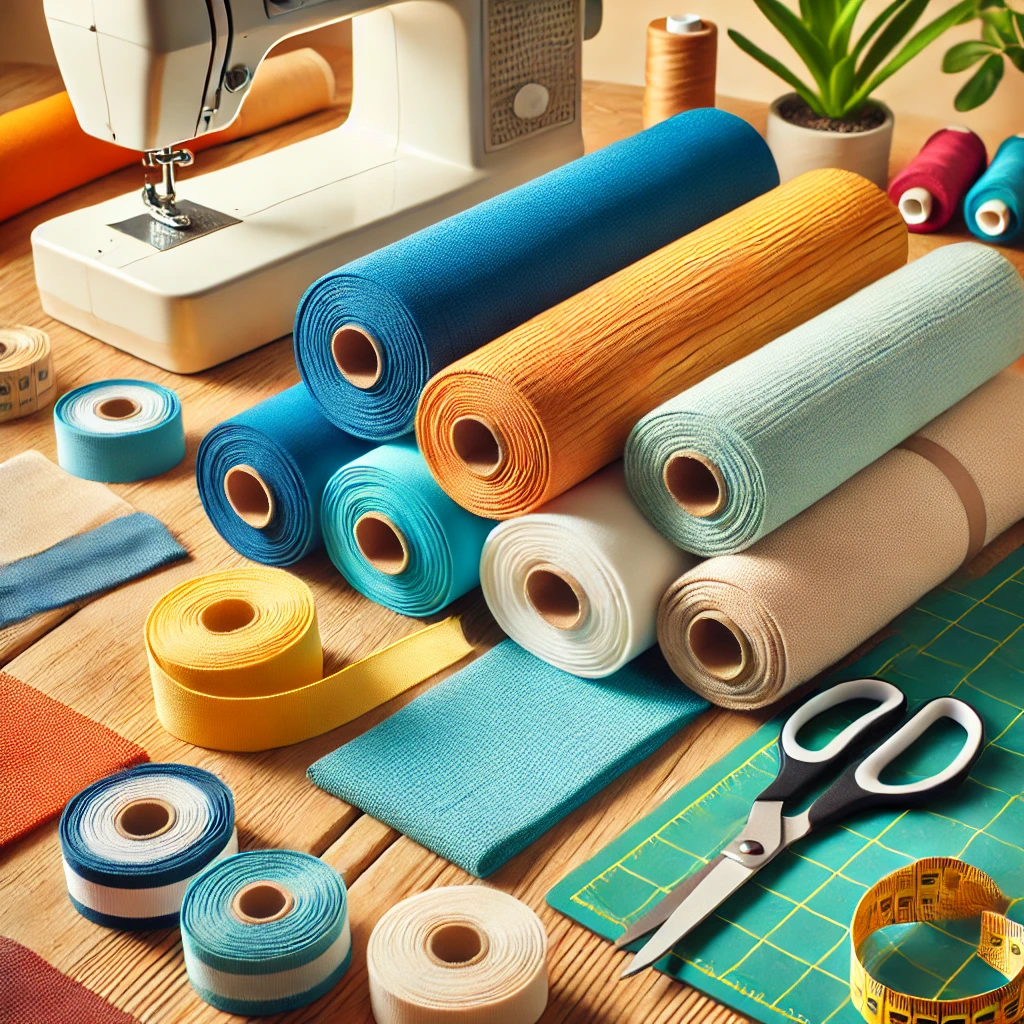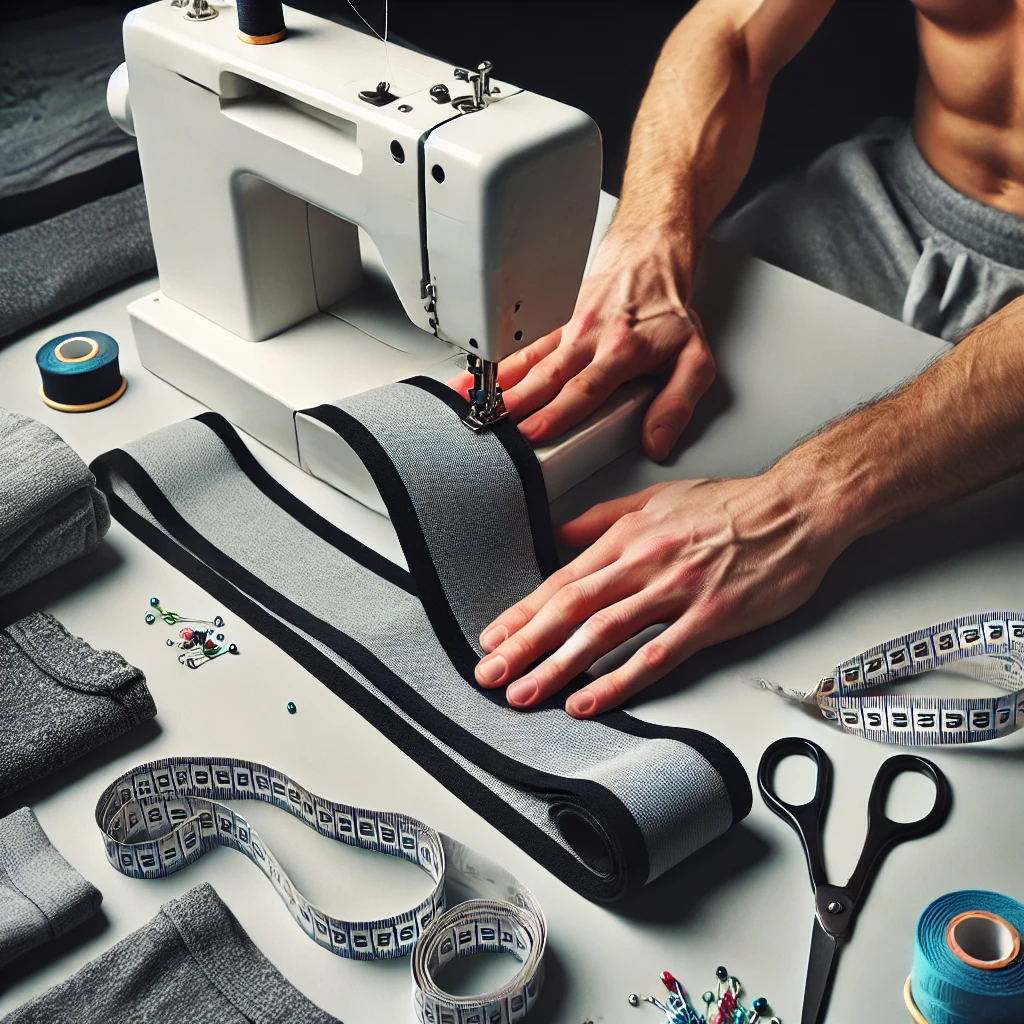Whether you prefer making bespoke sportswear or are a regular yogi, sewing your own yoga band may be a fulfilling endeavor. But selecting the correct fabric is essential to guarantee your yoga band is both comfortable and useful. The finest materials for sewing a yoga band will be discussed in this tutorial along with their special features, advantages, and sewing techniques to enable you to create the ideal band.

Why Fabric Choice Matters in Yoga Bands
The fabric you choose for a yoga band must be exactly the mix of comfort, stretch, and durability. Yoga generally consists of dynamic motions like bending, stretching, and maintaining postures for prolonged durations, hence the band should not only fit tightly but also preserve its form over time without losing elasticity. A yoga band’s ideal fabric has to satisfy a number of important criteria:
- Stretch & Recovery: A yoga band should be readily stretched and, after each usage, return to its original form free from sagging or deforming.
- Comfort: Particularly during extended exercises, the band has to be comfortable, breathable, and non-irritating since it lays right against your skin..
- Durability: The cloth should resist many uses and washing without pilling, fraying, or breaking down.
Let’s dive deeper into some of the top fabrics that meet these requirements and learn why they are ideal for yoga band sewing.
Top Fabrics for Yoga Band Sewing
1. Lycra/Spandex Blends
Because of its great flexibility and stretch recovery, lycra—also often called spandex or elastane—is among the most often used textiles for yoga bands and athletic clothing. Lycra blends—especially when combined with cotton, polyester, or rayon—offer exceptional resilience and flexibility in all directions.
- Stretch: Lycra provides a four-way stretch—that is, a horizontal and a vertical stretch. Yoga bands that must expand with body motions and then snap back to their original form will find this ideal.
- Comfort: Lycra maintains a silky feel when mixed with cotton, which makes direct skin contact pleasant. It also lets moisture escape, therefore keeping you cool and dry throughout the workout..
- Durability: Lycra mixes withstand wear and tear even after frequent usage and washing, therefore extending their lifetime.
- Sewing Tip: Lycra materials should always be sewed with a ballpoint needle as it prevents holes and snags. Lycra is also renowned for curling at the margins, hence adequate pinning of it before sewing is crucial.
2. Jersey Knit
Another great choice for sewing yoga bands are Jersey knit fabrics—especially those mixed with spandex. Lightweight, soft, and with a reasonable flexibility, Jersey knit is a flexible option for both yoga wear and casual attire.
- Stretch: Jersey knit fabrics typically have two-way or four-way stretch, which is suitable for yoga bands that need flexibility but don’t require the extreme elasticity of Lycra.
- Comfort: Jersey fabrics are soft and breathable, ensuring comfort during long yoga sessions. They’re particularly good at wicking moisture away from the skin, which is essential during intense workouts.
- Durability: While not as durable as Lycra blends, jersey knits hold up reasonably well under moderate wear and are perfect for yoga bands worn for casual, low-impact activities.
Sewing Tip: Jersey knit can be prone to rolling at the edges. Use a serger or zig-zag stitch to finish the edges and prevent fraying.
3. Cotton-Lycra Blend
A cotton-Lycra mix is a great option for people seeking a fabric that provides comfort and breathability along with stretch. Whereas the Lycra component guarantees the fabric has adequate stretch for flexibility, cotton offers a pleasant, natural sensation against the skin.
- Stretch: For activewear like yoga bands, this mix provides excellent stretch and recovery. Though it feels more natural, it is not as flexible as full spandex.
- Comfort: Long yoga practices would be best suited for cotton’s ideal of breathability and comfort. Even under strong movement, it is mild on the skin and won’t irritate it.
- Durability: Although cotton- Lycra mixes are robust, they often collect moisture, hence they may dry after a sweaty yoga practice more slowly than synthetic blends.
Sewing Tip: Use a stretch stitch or a double needle to sew seams in a cotton-Lycra blend to prevent breakage during wear.
4. Ponte Knit
Yoga bands requiring greater support generally utilize thicker, more structured fabric called ponte knit. Comprising polyester, rayon, and spandex, Ponte provides a sturdier grip without compromising comfort.
- Stretch: Ponte knit’s strong stretch compresses more than thinner materials like jersey knit. For someone seeking a more supporting yoga band, this is perfect.
- Comfort: Ponte is pleasant to wear even if it is thicker than other knits because of the spandex composition, which provides plenty of flexibility.
- Durability: Ponte knits are rather robust and may be regularly used and washed. Over time, the fabric keeps its form and resists pilling.
Sewing Tip: Because Ponte knit is thicker, you may need to adjust the tension on your sewing machine and use a thicker needle for smooth stitching.

5. Bamboo Knit
Bamboo knit fabric is a great alternative for everyone seeking environmentally friendly solutions. Perfect for yoga wear, bamboo cloth is not only sustainable but also naturally antimicrobial.
- Stretch: Bamboo knit is appropriate for yoga bands as it offers a reasonable level of flexibility, particularly when combined with spandex.
- Comfort: Bamboo is soft, naturally breathable, moisture-wicking, and most importantly comfortable. It’s mild for sensitive skin and naturally antibacterial properties help to ward off smells.
- Durability: Although bamboo textiles are robust, their softness and form may depend on additional attention during washing.
Sewing Tip: Bamboo knit is more delicate, so it’s best to use a gentle wash cycle and avoid excessive heat when drying.
Additional Tips for Sewing Yoga Bands
- Pre-Wash Your Fabric: Always pre-wash stretchy fabrics before sewing to avoid shrinkage after the garment is completed.
- Use the Right Stitch: A zig-zag stitch or a stretch stitch on your sewing machine works best for stretchy fabrics to prevent popped seams.
- Consider the Band’s Width: Depending on how much support or coverage you want, you can adjust the width of the yoga band. Wider bands provide more support, while narrower bands offer more flexibility.
Conclusion
Sewing a yoga band depends on selecting the appropriate fabric for performance as well as comfort. Lycra and spandex blends are the best options for their great flexibility and recovery; nevertheless, depending on your demands, various materials such jersey knit, cotton- Lycra,
Ponte knit, and bamboo knit have special advantages. You can choose the greatest fabric that will guarantee your yoga band offers the ideal fit and feel by weighing elements like flexibility, softness, and durability.


